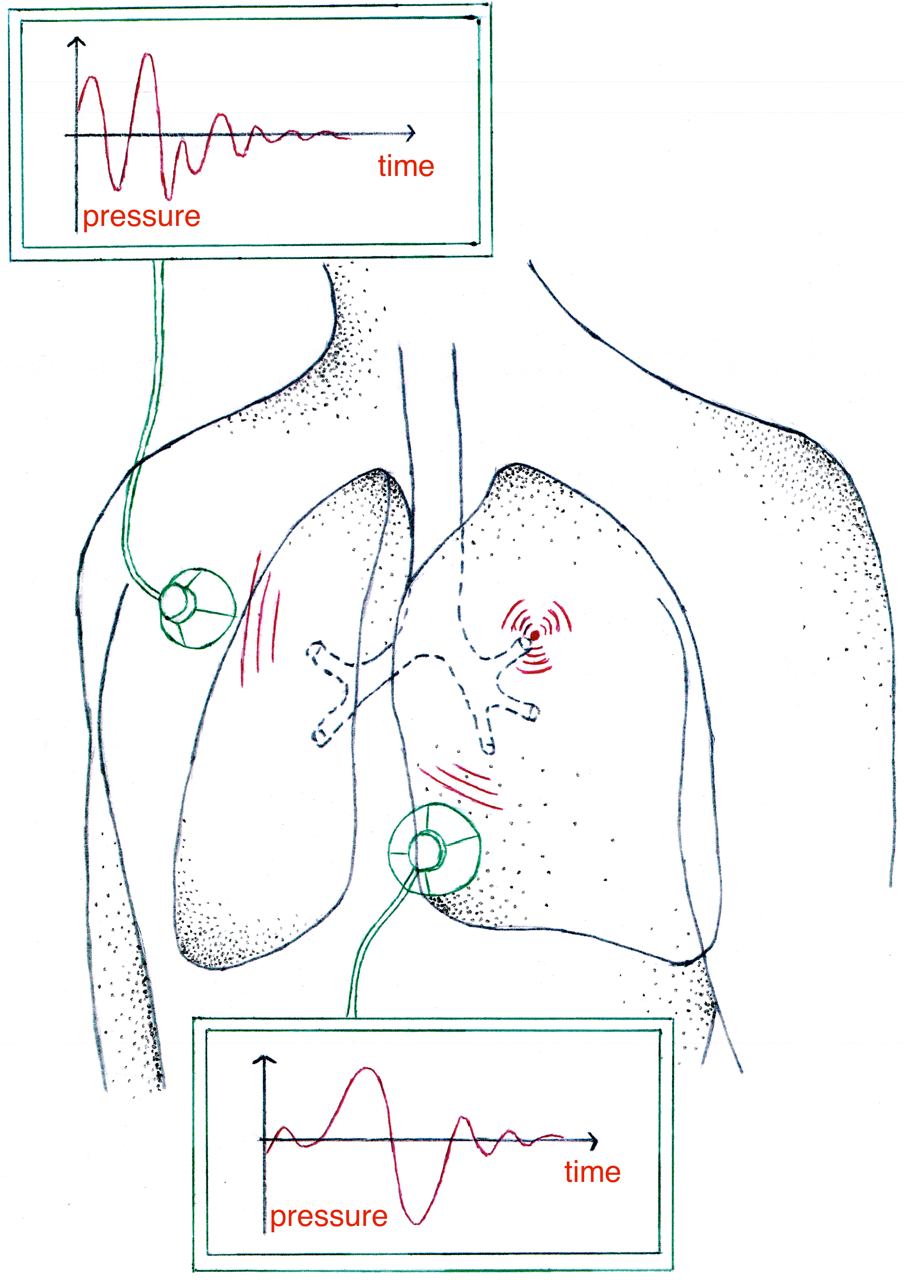The sounds that propagate to the chest have been used as a tool to diagnose
disease in the chest since the time of Hippocrates, however this was made much
more practical with the invention of the stethoscope by Rene Laënnec in 1819.
Since then a great deal of work has been done to refine this technique, its
advantage over more recent imaging methods being the fact that it is non-‐
invasive, non-‐radioactive, and relatively cheap. The disadvantage is a lack of
specificity. Wheezing (a particular type of unhealthy lung sound) alone has been
linked to at least 20 different conditions, and so it is hard to make a specific
diagnosis using sounds heard at the chest. The aim of our work is to make
diagnosis using lung sounds more specific. We believe that the way to do this is
to gain a better fundamental understanding of how sound is produced and
propagates in the chest. Specific ways in which we plan to accomplish this
include confirming a mechanism for the production of wheezes, pleural rub, and
placing a sound source at a known location within the chest and measuring the
response at the chest (see the accompanying figure). By studying sound sources
we hope to be able to distinguish a larger number of distinct sounds, and the
study of sound propagation would aid doctors in locating the source of any
unhealthy sounds, which once again would help them to differentiate between
currently similar noises. This work will be completed in collaboration with
Professor Edwin Chilvers at Addenbrookes Hospital.

| Dr. Anurag Agarwal |
Department of Engineering |
| Mr. Alastair Gregory |
Department of Engineering |
| Prof. Edwin Chilvers |
Professor of Respiratory Medicine, Department of Medicine |

